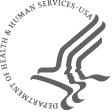Molecular Neurogenetics Study Section – MNG
The Molecular Neurogenetics (MNG) study section reviews applications that utilize or develop molecular genetic approaches where the context of neuroscience is essential to the application. Proposals reviewed here may investigate new genetic tools, emerging genetic methods, or use established genetic methods in various model systems (including drosophila, zebra fish, and mammalian models) to address neuroscience questions. Applications need not be hypothesis driven.
The List of Reviewers lists all present, whether standing members or temporary, to provide the full scope of expertise present on that date. Lists are posted 30 days before the meeting and are tentative, pending any last minute changes.
Review Dates
Topics
- Development of novel molecular genetic tools for study of central and peripheral nervous systems; neurodegeneration, neurodevelopment, addiction and neuronal function.
- Novel application of existing genetic, genomic and proteomic tools to neuroscience questions.
- Regulation of neural gene expression; sequence and technology based detection of epigenetic regulation via DNA and RNA modifications, chromatin remodeling, post-translational modifications and non-coding RNAs.
- Gene discovery and genetic variation with the aim of investigating typical neurodevelopment, neural function, and neuropathology.
- Methods for gene delivery and genome editing in neurons or glia.
- Molecular imaging technologies for gene expression profiling in neurons and glia; to study neural translational and transcriptional regulation and nervous system disease biomarkers including novel application or modifications of optogenetics.
- Linking genetics to neural phenotypes
- Bioinformatic and computational analysis of neuronal gene expression, proteomic and epigenomic datasets.
Shared Interests and Overlaps
MNG overlaps with multiple study sections that review aspects of nervous system biology or function. When the focus is on that particular context, the application may be reviewed elsewhere. For example, applications that investigate the genetics of chemosensory function will generally be reviewed in Neuroscience of Interoception and Chemosensation (NIC); somatosensory and pain in Sensory-motor Neuroscience Study Section (SMN) or Neurobiology of Pain and Itch (NPI); auditory system function and hearing loss in Auditory System (AUD); visual information processing in Neuroscience of Basic Visual Processes Study Section (NBVP); embryonic neural development reviewed in Neurogenesis and Cell Fate (NCF); neurodegeneration in Cellular and Molecular Biology of Neurodegeneration (CMND) or Cellular and Molecular Biology of Glia (CMBG); and complex behavioral disorders in Pathophysiological Basis of Mental Disorders and Addictions (PMDA).
Applications focused on rare neurological diseases may be reviewed by MNG; however, studies focused on molecular mechanisms of pathogenesis of rare diseases that include neurological pathologies may be reviewed by Therapeutic Approaches to Genetic Diseases (TAG).
Applications focused on methods of gene delivery and editing in neurons and glia may be reviewed by MNG; applications focused on development of gene therapies for nervous system diseases may be reviewed in TAG.
There are shared interests in genetics of neuroscience with Genetics of Health and Disease (GHD). Applications that emphasize neurodevelopment, neural function and neuropathology aspects are reviewed in MNG. Applications in which the focus is on molecular genetic and genomic variation are reviewed in GHD.
There are shared interests in the use of the molecular biological and genetic tools in studies of the nervous system with Neuronal Communications (NC). Applications focused on the genetics, genetic tools or genetic discovery are reviewed in MNG. Applications using molecular biology and genetic techniques with a focus on synaptic plasticity are reviewed in NC.
There are shared interests in genetic, genomic and epigenetic factors contributing to the risk factor and/or pathogenesis of neurodegenerative disorders with Clinical Neurodegeneration Translational Neuroscience (CNTN). Applications that strongly emphasize the genomic or transcriptome functions in neurodegenerative disorders are reviewed in MNG. Applications that emphasize on risk factors, biomarkers, diagnosis, and treatment of neurodegenerative diseases are reviewed in CNTN.
There are shared interests in genetic, genomic and epigenetic factors contributing to the risk factor and/or physiopathology of neurodegenerative disorders with Cognitive Disorders and Brain Aging (CDBA). Applications that emphasize the development of genetic approaches and or on hypothesis driven mechanistic studies in aging and neurodegeneration are reviewed in MNG. Applications that emphasize genetic factors correlating with cognitive and behavioral outcomes in aging and neurodegeneration are reviewed in CDBA.

